You do not have permission to edit this page, for the following reason:
You can view and copy the source of this page:
Return to Icertis Experience for Word.
Download the installer for the Icertis Experience for Word on your local machine. Your IT Administrator can get the version details from Icertis Support.
The minimum system requirements for Icertis Experience for Word are:
This section describes the process of setting up Icertis Experience for Word, both on macOS and Microsoft Windows.
Icertis Experience for Word can be deployed in two ways:
This section describes the process of setting up Icertis Experience for Word on macOS and Microsoft Windows locally.
To install ICI Experience for Word:
1. Obtain the ICI Experience for Word manifest file.
2. Close all Microsoft Word instances.
3. Remove cache from following folder: /Users/<username>~/Library/Containers/osfMicrosoft.com/Data
4. Click Go on your desktop and then select the Go to Folder.
5. Copy the following path in the field:
/Users/<username>/Library/Containers/com.microsoft.Word/Data/Documents/wef
6. Copy the ICI Experience for Word installation file (.xml extension) into the wef folder. Once the file is placed on the wef folder, do not modify it manually. Contact ICI support for modifying the installation file.
7. Launch Microsoft Word 2016.
8. Click the Insert tab.
9. Click the My Add-ins drop-down. Select the Icertis Experience for Word icon from the drop-down to enable it on the Home tab.
Additionally, ensure the following settings are enabled while using Icertis Experience for Word on macOS:
1. Create a new folder on your C: drive. You can name it as per your preferences, such as Icertis Experience for Word. If you are using a shared machine and want other users to be able to use Icertis Experience for Word on it, share this folder as follows:
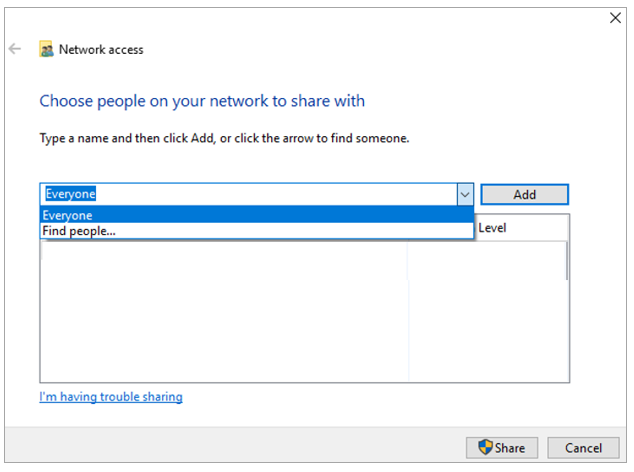
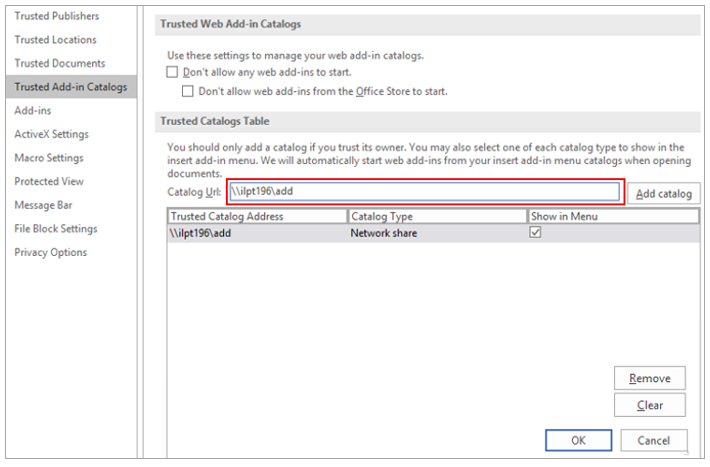
Here are some helpful tips to have a better experience with Icertis Experience for Word:
Each ICI user plays a specific role in the Agreement workflow. An Administrator assigns roles, and they can be customized as per the business requirements.
You can provide complete access to creating, editing and removing Templates and Clauses from either Icertis Experience for Word or the ICI user interface. This is achieved by managing privileges of entities such as Agreements, Clauses and Contract Types for the selected Security Group from ICI. You can also set the Org Path for specific Security Group users to Root Level.
To manage access privileges for an ICI user:
1. Click User Administration on the Dashboard.
2. Click Users. The list of currently set up users is displayed on the Users page.
3. Click the View Record icon to display the selected user record.
4. Click the Edit button. The Edit User page opens.
5. Click the Organization Unit icon to set the Org Path. The Select Organization Unit page opens.
6. Set the Org Path to Root.
7. Click Ok.
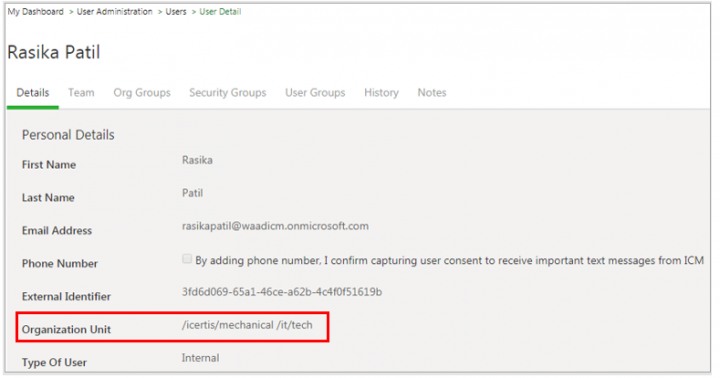
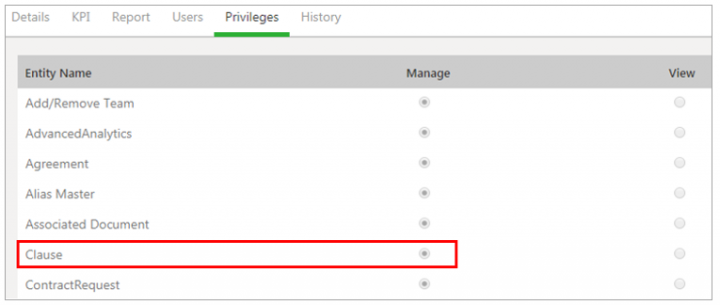
You can use Icertis Experience for Word to create and edit ICI and third-party agreement documents.
If you open a third-party agreement or a blank document and log in to the plug-in, the Looks like you are editing a non-ICI document, do you want to continue? message will be displayed.
The Dashboard page displays the following options:
Using Icertis Experience for Word, you can perform the below tasks for agreements:
When you initiate the discovery process using the Icertis Experience for Word, the system triggers the discovery of attributes and clauses for both - own and third party type of paper. However, only non-tagged attributes and clauses are discovered. If a clause from the ICI Clause Library is already tagged in the agreement document, it will not be discovered during the process again.
To use the attributes and clause discovery features in Icertis Experience for Word:
The Review Agreement Discovery Now message appears.
Agreement Clauses
The blue bars next to the clause category names indicate the discovery confidence level (High, Medium, Low) of the discovered clauses.
The following actions can be taken on selected Clause:
Sort the Search by:
All the discovered attributes (such as Contract Value, Effective Date, Expiry Date and so on) are displayed as shown in the screenshot below. The Contract Value is present with the supported currencies. The grouping of attributes is based on the grouping preferences applied at the time of Contract Type creation.
The blue bars next to the attributes indicate the discovery confidence level of each attribute. The number next to a blue bar indicates the number of times the attribute is present in the document.
ICI places each content control in a separate paragraph line. Dynamic clauses are added inside the blank content control which are satisfied through rules.
Clauses are tagged with content controls as follows:
Note:
To create a Rule and build your own repository of ICI contracts within which similar Clauses (or Agreements) can be extracted:
Let’s consider an example of finding similar Clauses.
To find similar clauses specific to a contract type, set the Apply filter option to On.
Choose the Contract Type from the Choose Contract Type drop-down to further refine your search.
A score is displayed to indicate similarity between the selected clause and the clause from the Clause Library.
To find similar Agreements from ICI repository that may have been created for other customers:
To further refine your search set the Apply filter option to On and choose the Contract Type from the Select contract type drop-down.
It may take some time to find similar data if there are many Agreements. You can see the score indicating how much the Agreements match.
You can view the agreements in Icertis Experience for Word provided you have Manage privileges on the agreement and can edit it in Icertis Experience for Word.
To view an existing agreement:
Select the Agreement contract type from the Select contract type drop-down to filter the displayed agreements by contract types. For example, MSA_SD. Agreements created with MSA_SD contract type are displayed.
You can also search for an agreement by entering a search criteria in the Search agreement field.
Any user who has Manage privileges on the agreement can edit the agreement in Icertis Experience for Word.
To edit an agreement:
You can hover the cursor on the version number (for example, Version 1) to view the ICI role of the username displayed and the date when the version was created.
The Agreement operation/actions button gives access to a few more functions you can perform on the Agreement. For example, Identify Attribute, Identify Clause, Add Deviation and Add Commitment.
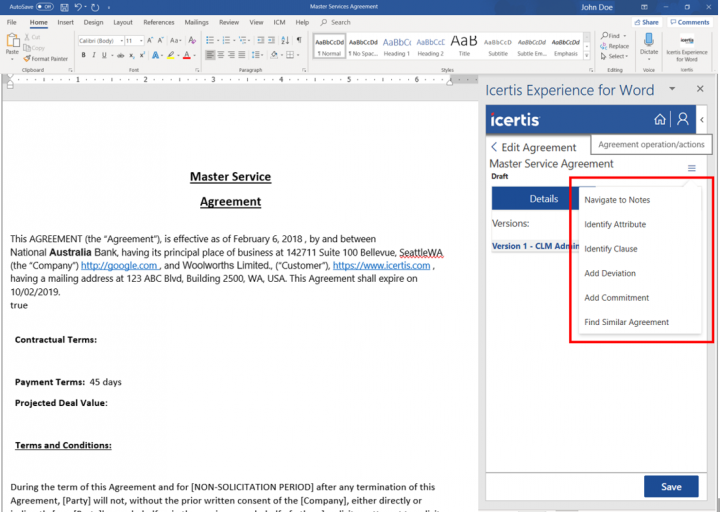
Click this option to open to the Notes tab of the agreement in Web ICI.
The Identify attribute feature enables the user to select a value in the document as an Attribute and link it to an Attribute that is present in the ICI global Attributes list.
For example, if you select the Attribute-Assignment Date, you can make changes in the date format or in the actual date of the assignment. Icertis Experience for Word would identify these changes and update the same in Agreement on ICI Web.
To identify metadata (attribute):
The Identify Clause enables the user to identify static text in the document as a Clause and link it to a Clause that is present in the ICI Clause Library.
To identify a Clause:
You can add deviation to the Clauses in the Agreement using the Add deviation feature.
To add a deviation:
Approvers can approve or reject the deviations in a clause.
The Action Required button is only visible to Approvers.
The window shows all the tagged clauses in the agreement with their states.
Non-approver users can view the clause deviation and also add a note from within the Icertis experience for Word.
The Show more button will be available:
You can add commitments to the Agreement using Icertis Experience for Word.
To add a Commitment:
Click the Trigger AI discovery icon. The discovery process starts, and the loading icon is displayed with a Discovery in progress… tool-tip.
Once the discovery process is complete, discovered attributes are tagged in the document and populated in the attribute fields.
Within the Library page, you can tag Attributes, Clauses, Signatories, Template Variables, Agreement Clauses, and Parent Agreement Clauses (if applicable).
Click the Library tab on the Edit Agreement page. The Library page opens.
All the Clauses that are used in the chosen Contract Type are displayed under different Clause groups that are assigned to the Clause when it is created.
To tag Clauses:
Notes:
The clauses can also be tagged in the Templates following the same process.
2. Click the corresponding arrow to expand Internal or External Signatories and view the available signatory tags. You can add a maximum of three internal or external signatories.
3. Click the Agreement Clauses tab. A list of all the Agreement Clauses is displayed.
The Clauses are displayed in the same order as they are tagged inside the agreement. For example, Use Rights Clause is displayed first in a list as it is the first clause tagged in the document. Then the Instance Rights Clause is displayed second, Application Use Rights Clause is displayed third and License Terms is displayed fourth as per their tagging order in the document. The page displays first 30 clauses in the list.
4. Click previous and next action arrows to display and navigate through the sets of 30 clauses.
With this release, for the latest version of an agreement, any deviations for clauses will be highlighted directly within the Icertis Experience for Word.
If the Agreement is a child Agreement or an Amendment, the Parent Agreement Clauses tab displays the Clauses associated with the Parent Agreement.
To view Parent Agreement Clauses:
1. Click the Parent Agreement Clauses tab. A list of all the Clauses used in the Parent Agreement is displayed.
2. Click Add to add the Clause in the Agreement.
3. Click Clause Text to view or read the Clause
This feature helps you easily identify the tagged elements in the Agreement document.
Click the Design Preview icon to highlight the Attributes, Clauses, and Signatory elements on the Template.
After editing the Agreement, you can publish it to be able to share the updates.
To publish the Agreements:
To view the modifications made to an agreement document:
The Add-in notifies users about modifications done along with additions and deletions in the tagged attributes, clauses, template variables, and associations of the current agreement before actually publishing it.
Note: Any action taken on the agreement will reflect only when the document is published in ICI.
You can make changes to the agreement and resend the agreement for approval using the Send for Approval option.
The Primary Owner can make changes and resend the agreement for approval.
You can create a Template by using ICI Web UI as well as Icertis Experience for Word. Using Icertis Experience for Word, you can:
To create a Template:
1. Click the Create Template button on Icertis Experience for Word Home page. The Create Template page opens. There are two tabs on this page.
(a) Template Details
3. In the Select Member field, select an appropriate User or a User Group for the role.
4. Type the Step on which the person will approve or reject the Template. Mentioning the step number is important, since there can be multiple approvers and the step number defines the signing sequence. This field is displayed only when you select Approver as the Role.
5. Click Add. The member is added to the team. You can see the name of the person along with the other details under the Team section. Repeat steps 1 to 5 to add more members.
5. Select the Display Tagged Clauses checkbox to view a list of only the Clauses tagged in the Template.
(f) Tagging Associations
To tag associations in your Template:
1. Click the Associations tab in the Library section. You can search for an Association using the Search Associations by name box.
2. Click the corresponding icon to select the appropriate option for the desired Association:
(h) Tagging Template Variables
To save the Template you have just created:
1. Click Save. The Missing Field Values message is displayed if values for template's extended attributes are not entered.
Template Approvals are done on the ICI Web UI.
1. After clicking the Send For Approval button. The Template has been successfully sent for approval message is displayed. A task is assigned to the approver selected in the Team. If you have not entered all the mandatory information details, you will be redirected to the ICI Web UI on the Edit Template page. Unless mandatory information is entered in the Template Additional Attributes section, the Template cannot be sent for approval.
2. Enter all the mandatory details in the Template Additional Attributes section on the Details section of the Edit Template page.
The Edit Template functionality allows you to add or remove Clauses, Attributes, Associations, and Signatories in the Template.
1. Click View Existing Clauses on the Dashboard page. The Templates page opens.
4. Click the corresponding three dots Select Action icon to perform various actions on the Template:
The link displays template’s extended attributes in a View Template Additional Attribute window upon clicking.
To edit a Template:
1. Click the Edit icon next to the Template you wish to edit. The Edit Template page opens.
2. Edit the basic Template details if required on the Details tab. For example, you may want to change the Effective To date or update Version Comments. You need to change the Effective From date to the present or a future date.
3. Add a User or a User Group to the Team if required.
In the Library section, you can add or remove the Attributes, Clauses, Associations, and Signatories as previously explained in the Library section.
On the More Actions menu of the Edit Template page you can see the following options:
Template Variables are the Attributes specific to the Template. To tag Template Variables into the Template, they must first be created and added into the Template only through the ICI Web. The Template Variables can be tagged into a Template using Icertis Experience for Word by accessing the Template Variable menu from the Library section.
If you haven’t already added the Template Variables using the ICI Web you can save the Template, you are creating and open it on ICI Web. Alternatively, you can go to the Edit Template page and be redirected to ICI Web UI.
To edit Template Variables:
1. Open any Template in Edit mode. The Modify Template menu is only available in the Edit Template mode.
2. Scroll down the page and click the More Actions icon.
3. Click Edit Template Metadata/Variable to view a list of all the Template variables for the selected Template. A popup message is displayed denoting that the Template is now saved, and the user will be redirected to ICI Web to create or add Template variables into the Template.
4. Click OK. You will be redirected to the ICI Web to make additional changes to the Template.
5. Type or select the Template details on the Edit Template page of ICI Web.
6. Click Next. The Template Variables section opens. Attributes displayed in Available Attributes section are all the Attributes available in ICI that is. Attributes which are defined as Global or Is Default = Off are displayed here.
7. Click the arrow icon in the Available Attributes section to add an existing Attribute as variables/Attributes to the Template.
8. Edit the selected Attribute. You can change the Display name and Data Type of the Attribute.
9. Click Save to save the changes.
To create a new Template Variable:
1. Click the Add icon Template Variables section. The Add Attribute section opens.
2. Type or select the mandatory details such as Display Name, Data Type. You can define Is Default = On. This means that this Attribute is only available for this Template and cannot be used in other Templates. The Attribute having property as Is Default = true, is not displayed in Available Attribute section.
3. Click Save after defining all the properties. The newly created Template Variable is displayed in the Selected Attribute section.
4. Click Next. The Verify tab opens.
5. Click Update to update the Template with newly created Template Variables.
6. Click the ![]() back icon after selecting the Template variable. The Template Variable is removed from Selected Attribute section.
back icon after selecting the Template variable. The Template Variable is removed from Selected Attribute section.
You can create Clauses in Icertis Experience for Word and save them in the ICI repository. Any user with Manage access to the Clauses tile in ICI Web can create a Clause in Icertis Experience for Word.
(a) Clause Details
The following fields are displayed on the Details page:
(b) Using Library
(a) Adding Team Members
(b) Tagging Attributes
(c) Tagging Signatories
You can add, edit, remove and assign a signatory to your Clause depending on your user access.
To tag Signatories:
1. Click the Signatories tab in the Library section. The signatories are grouped as:
(d) Tagging Template Variables
Template Variables are the Attributes specific to the Template.
To tag Template Variables:
1. Click the Template Variables tab in the Library section. The Selected Contract Types in Clause Details are displayed on this page and greyed out, hence you cannot edit them.
2. Since Template Variables are a part of a specific Template, click the Templates drop-down. A list of all the available Templates is displayed. You can select any number of Templates from the available list.
3. Select the Check all checkbox to select all the Templates.
4. Click Uncheck all to unselect all. After you select The Template(s) all the Template Variables associated with the Template are displayed.
5. Enter your search criterion in the Search bar to search a Template Variable.
6. Click the corresponding Add icon to add the Template Variables tag to the Clause. A number is displayed next to the Template Variable when it is tagged. This number denotes the number of times that Template Variable has been tagged in the document.
7. Select the Display Tagged Template Variable checkbox to view all the tagged Attributes in the Template.
8. Click the Delete icon next to the tagged Attribute. The Remove and Remove all options are displayed. If a Template Variable is added multiple times in the Clause, the Remove all option removes all the instances from the Clause. However, the Remove option removes a single instance.
9. Click the tick mark to close the Remove menu.
You can edit Clause details, add or remove Attributes, Signatories, and Template Variables.
To edit a Clause:
The displayed list of Templates is color coded, the colors denote different states of the Template:
Note: The number denotes the Clause version such as version 1, version 8.
On the Details tab, edit basic Clause details if required. For example, you may want to change the applicable Clause properties depending on your requirements or change the Clause group.
In the Library section, you can add or remove the Attributes, Signatories, and Template Variables as explained in the Library section.
To save a Clause you have created:
1. Click Save. The Missing Field Values message is displayed if values for clause's extended attributes are not entered.
The following table provides activity-wise information on when to use Icertis Experience for Word and when to use ICI Web:
Some issues that you are likely to face when working with Icertis Experience for Word, with applicable Causes and Solutions are listed below.
Related Topics: Agreement Management | Association Management | Compliance Management | Template Management | Clause Management | Configuration | Reports| Outlook Add-in | Release Notes |
You do not have permission to edit this page, for the following reason:
You are not allowed to execute the action you have requested.
You can view and copy the source of this page:
Return to Icertis Experience for Word.